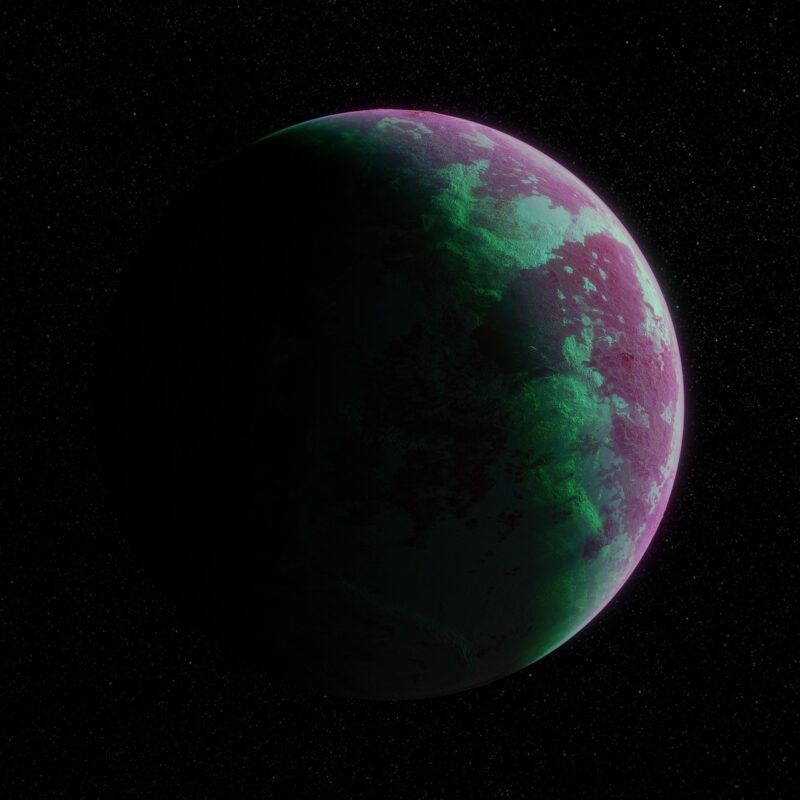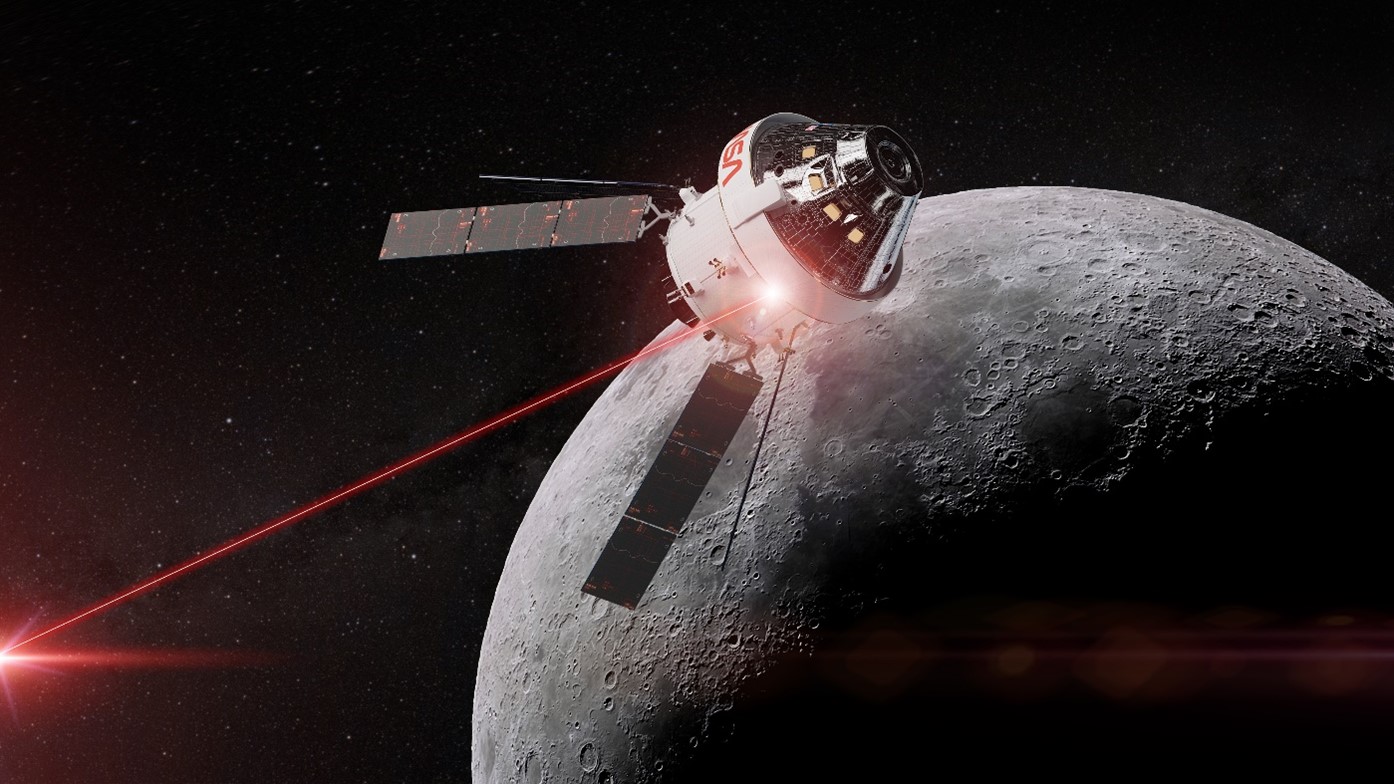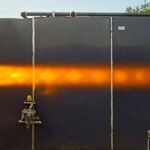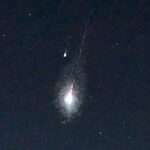Now Reading: Could desert lichen survive on other worlds?
-
01
Could desert lichen survive on other worlds?
Could desert lichen survive on other worlds?


Could desert lichen survive on other worlds?
Astrobiology is the study of life in our universe. The only life we currently know of resides on Earth. So scientists look at exoplanets – worlds around other stars – that might have similar conditions as Earth and, thus, be conducive to life. Many of the exoplanets we’ve discovered orbit stars with radiation stronger than that of our sun. But researchers at the Desert Research Institute (DRI) in Reno, Nevada, said on June 24, 2025, that stronger radiation might not be as much as a limiting factor as previously thought. The researchers found a desert lichen on Earth that can survive the punishing radiation formerly considered lethal.
The researchers studied a lichen called Clavascidium lacinulatum that lives in the Mojave Desert. Study co-author Henry Sun of DRI explained how they came to study this lichen:
The study was motivated by a curious observation. I was just walking in the desert and I noticed that the lichens growing there aren’t green, they’re black. They are photosynthetic and contain chlorophyll, so you would think they’d be green. So I wondered, ‘What is the pigment they’re wearing?’ And that pigment turned out to be the world’s best sunscreen.
In fact, the researchers found this lichen could survive for three months under solar radiation they thought would be deadly. Not only that, but – when exposed to water – the lichen could recover from injury and replicate.
The researchers published their peer-reviewed results in the journal Astrobiology on June 12, 2025.
Solar radiation can be deadly
Our sun emits light across the electromagnetic spectrum. Its most intense emissions are in the infrared, visible and ultraviolet (UV) wavelengths. Scientists classify a range of UV rays as well. UVA and UVB rays reach Earth’s surface and can harm your skin, with everything from sunburn to skin cancer. Fortunately, the more dangerous UVC rays get almost completely blocked by our atmosphere.
In fact, UVC rays are so deadly that they’re used in sterilizing objects. This disinfection technique kills microorganisms.
Many of the exoplanets astronomers have found orbit stars that emit intense UVC radiation. This is particularly true during solar flares.

Testing lichen against UVC rays
So the researchers decided to test this strangely dark lichen against UVC rays in the lab. They put lichen samples under a UVC lamp for three months straight. Sun said:
In order for a microorganism to persist on a planet, it has to last longer than a day. So, our experiment had to be long enough to be ecologically significant. We also wanted to go beyond just activity and demonstrate viability.
And what they found was the lichen not only survived, but it replicated once rehydrated. The lichen didn’t hold up 100% perfectly, however. It was injured, and only about half of the algae cells remained viable. But the surprise was that any of it survived.

How did the desert lichen survive?
Lichens are a partnership of fungus and alga. This particular lichen, Clavascidium lacinulatum, had a protective, darker top layer. When the researchers cut that layer away, the cells died in less than a minute from the UVC rays.
In another test, they put the lichen in an oxygen-free environment but exposed to UVC rays. They found the damage to the lichen was limited. The paper said:
We came to the conclusion that the lichen’s top layer – a less than millimeter-thick skin, if you will – assures that all the cells below are protected from radiation. This layer acts as a photo stabilizer and even protects the cells from harmful chemical reactions caused by the radiation, including reactive oxygen.
Thus, the researchers believe some of these irradiated exoplanets may not be so hostile to life after all. They said:
They may be teeming with colonial microorganisms that, like the lichens in the Mojave Desert, are ‘tanned’ and virtually immune to UVC stress.
Co-author Tejinder Singh of NASA Goddard Space Flight Center said:
This work reveals the extraordinary tenacity of life even under the harshest conditions, a reminder that life, once sparked, strives to endure. In exploring these limits, we inch closer to understanding where life might be possible beyond this planet we call home.
Bottom line: Researchers have found a desert lichen that can survive extreme solar radiation. The discovery could have implications for life on other worlds.
Source: UVC-Intense Exoplanets May Not Be Uninhabitable: Evidence from a Desert Lichen
The post Could desert lichen survive on other worlds? first appeared on EarthSky.
Stay Informed With the Latest & Most Important News
Previous Post
Next Post
-
 012024 in Review: Highlights from NASA in Silicon Valley
012024 in Review: Highlights from NASA in Silicon Valley -
 02Panasonic Leica Summilux DG 15mm f/1.7 ASPH review
02Panasonic Leica Summilux DG 15mm f/1.7 ASPH review -
 03How New NASA, India Earth Satellite NISAR Will See Earth
03How New NASA, India Earth Satellite NISAR Will See Earth -
 04And Thus Begins A New Year For Life On Earth
04And Thus Begins A New Year For Life On Earth -
 05Astronomy Activation Ambassadors: A New Era
05Astronomy Activation Ambassadors: A New Era -
06SpaceX launch surge helps set new global launch record in 2024
-
 07Space Force plans new ‘Futures Command’ amid pressure to speed up modernization
07Space Force plans new ‘Futures Command’ amid pressure to speed up modernization




















